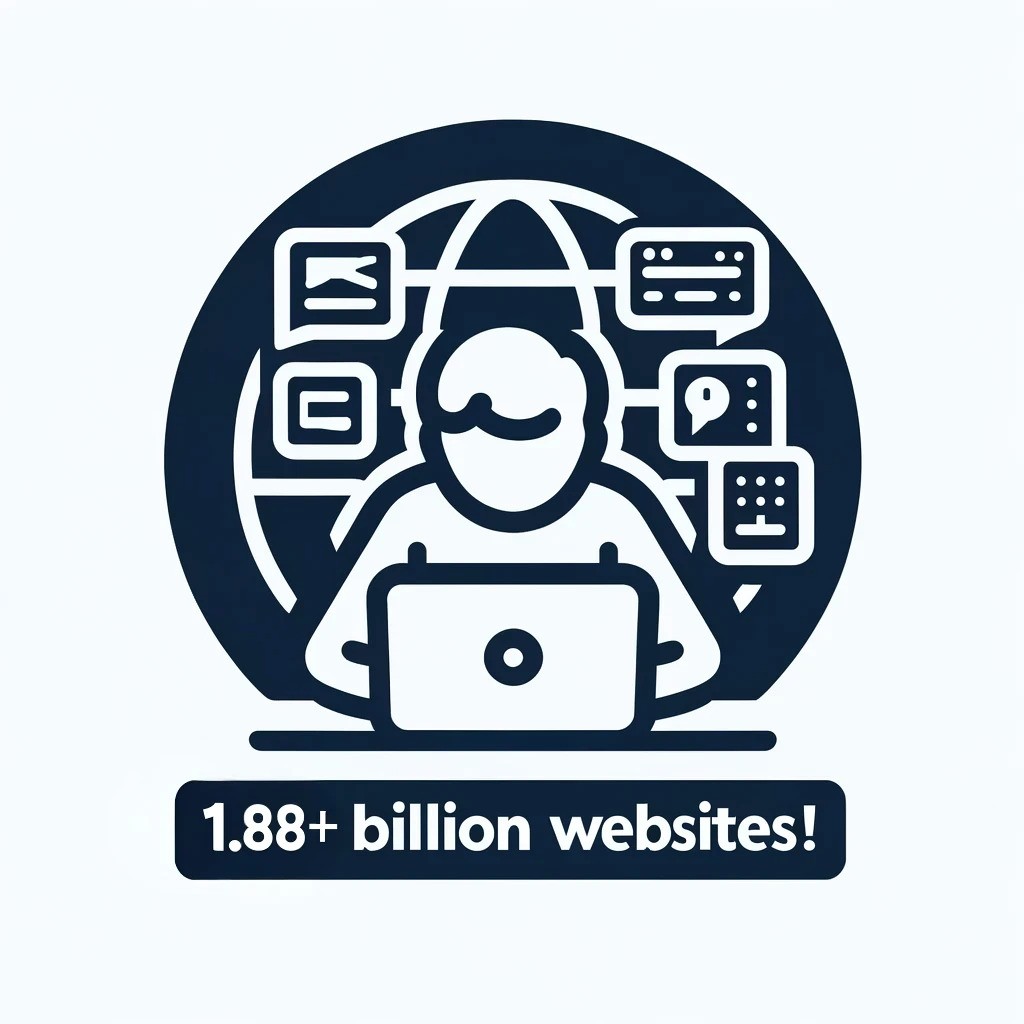It’s not enough that you’ve got a website when you’re trying to grow your business. You also need to actively find ways to promote your website to attract visitors, who can potentially become customers.
No one will know about your website, including Google, if you don’t promote it.
This is because the Internet comprises billions of sites, over 1.88 billion! And without some form of promotion, you could be a needle in a haystack (metaphor).

Fortunately, we’ve put together several tips that you can use to promote your website and increase reach. Here are 19 ways to promote your website!
1. Search Engine Optimization (SEO)
SEO is one of the best methods for expanding visibility. It’s the process of optimizing web pages for search keywords or phrases.
Essentially, if your website can be found on the first page of search engines, then you’ll receive more visitors, providing that your title, descriptions, body texts, and other factors are well-optimized.
If you’ve had your website for some time now but are still struggling to get traffic or qualified leads, then your SEO focus could be getting backlinks and conversion rate optimization.
For most established websites with authority, the focus should be on editing the content they already have for improvements and to remove barriers to indexing. All while still creating new content for their website.
SEO is time-consuming, but it will position your website to receive more visitors.
RELATED: Getting Your Business Online: What is SEO and How it Works
2. Start a Blog and Do Some Guest Blogging
Starting a blog and creating useful content for your target audience can help you increase traffic to your website. In fact, many entrepreneurs equate their success online to having a consistently updated blog. This increases the chances that your target audience will find you.
The more content you create around keywords your audience seeks, the more indexed pages you’ll have in SERPs (search engine result pages).
Additionally, writing content for other prominent blogs within your industry is an opportunity to increase visitation to your site. A simple link to your blog or biography from a guest post can attract new visitors.
Remember that your organization’s ability to create amazing content is your biggest asset when you own a blog. This is because it helps you gain backlinks naturally, which is an important ranking factor.
RELATED: How to Start a Blog for Free.
3. Use Facebook Ads
Facebook is the largest social media platform in the world, and it has thousands of new users every day.
The platform can help you target specific groups of people with targeting capabilities such as location, interests, industry, job titles, and much more. But make sure your ad copy is enticing enough to grab the user’s attention.
Spend enough time on your headline to get it right. People first look at the headline to determine if your content is worth their time. See this blog post for how to create click-worthy headlines (#14 on the list).
You can use Facebook ads to get traffic while working on SEO.
4. Retargeting
Retargeting or remarketing is a digital advertising strategy to re-engage users. Specifically, those who have previously interacted with your website, app, or digital content but did not complete a desired action, such as making a purchase or filling out a form. Targeting these users with relevant ads increases the chances of converting them into customers.
How Retargeting Works
- Tracking User Behavior: When a user visits your website, a small piece of code (a pixel) is placed in their browser. This code tracks their behavior, such as pages visited or items added to the cart.
- Creating Audience Segments: Users are segmented into different audiences based on the tracked behavior. For example, you might have segments for users who visited product pages, users who added items to their cart but did not check out, and users who completed a purchase.
- Delivering Personalized Ads: Ads tailored to each segment are then shown to users as they browse other websites or use social media. For instance, someone who added items to their cart might see ads featuring those products with a special discount to encourage them to complete the purchase.
In the past, you could use third-party cookies to track your visitor’s behavior. However, with third-party cookie deprecation, brands must adapt their retargeting strategies accordingly.
Here are several retargeting methods to consider.
Leverage First-Party Data
First-party data, collected directly from your audience through interactions on your website, app, or other owned channels, is invaluable. Use this data to create detailed customer profiles and personalized marketing campaigns. Ensure your data collection methods are transparent and compliant with privacy regulations.
Customer Data Platforms (CDPs)
CDPs can help you manage and analyze first-party data more effectively. They unify customer data from various sources, providing a comprehensive view of customer behaviors and preferences. This allows for more precise retargeting efforts.
Implement Contextual Advertising
Contextual advertising targets users based on the content they are currently viewing rather than their past behavior. This method aligns your ads with relevant content, increasing the likelihood of engagement without the need for cookies.
Focus on Email Marketing
Email marketing remains a powerful tool for retargeting. Collect email addresses through lead magnets, newsletters, and special offers. Segment your email list based on user behavior and preferences to send targeted, personalized emails that drive conversions.
Explore Server-Side Tracking
Server-side tracking involves collecting data directly on your servers rather than relying on third-party cookies. This method provides more control over data collection and can be more secure and privacy-compliant.
Use Identity Graphs
Identity graphs compile data from multiple sources to create a unified view of each customer across devices and channels. They help bridge the gap left by third-party cookies, allowing for consistent retargeting efforts.
Collaborate with Walled Gardens
Platforms like Facebook, Google, and Amazon (often called walled gardens) have their own data ecosystems. Collaborate with these platforms to leverage their first-party data for retargeting within their networks.
Invest in Direct Relationships
Building direct relationships with your customers is more critical than ever. Create engaging content, foster community through social media, and provide exceptional customer service to encourage direct interactions and loyalty.
5. Using Pay Per Click Strategy
Pay-per-click (PPC) advertising is a strategy where you pay for each visitor who clicks on your ad. Platforms like Google Ads or Bing Ads allow you to promote your site by bidding on specific keywords. This can be particularly effective if your goal is to convert visitors into customers.
Here’s how to make the most of PPC advertising.
- Choose the Right Keywords: Selecting relevant and specific keywords is crucial. Avoid broad terms that attract a wide, non-targeted audience.
- Create Compelling Ad Copy: Your ad should be clear, enticing, and directly address the needs of your target audience.
While PPC can drive significant traffic to your site, it can also become expensive quickly. To maximize your investment, direct users to a dedicated sales landing page and ensure you’re targeting the right keywords.
A Couple of Examples
Imagine you choose the keyword “Galveston hotels” and bid $3.00 per click. This means you’ll pay $3.00 each time someone clicks on your ad.
However, it’s essential to avoid broad keywords. For instance, if you sell cars and target the keyword “cars,” you might waste money because this term is too general. People searching for “cars” are likely still in the early research phase and not ready to buy.
Instead, use specific keywords like “Toyota Camry 1996 for sale.” This targets prospects further in the buying process, increasing the likelihood of converting.
6. Use Your URL Like a Ninja!
Your website URL is a powerful tool for driving traffic to your site. You can boost traffic and visibility by strategically placing your URL in front of your target audience.
Here’s how to effectively use your URL.
- Business Cards: Include your URL on your business cards to ensure everyone you meet can easily find your website.
- Email Signature: Add your URL to your email signature so that every email you send promotes your site.
- Print Advertising: Incorporate your URL into print ads, brochures, and flyers to reach a broader offline audience.
- Digital Creatives: Embed your URL in all your online content, such as social media posts, digital ads, and online forums.
- Comments: When relevant, include your URL in comments on blogs, forums, and other online communities.
Consistently promoting your URL across various platforms and materials makes it easier for your target audience to find and visit your website.
7. Use Directory and Industry-specific Listings
Online directories and industry-specific listings are good tools for reaching a broader audience. Many people use directories like Yellow Pages and Yelp to find information about different industries. You can drive more traffic to your website by listing your business in these directories.
Here’s how to make the most of these listings.
- Online Directories: Register your business on popular directories. Ensure your listing is complete with accurate contact information, a compelling description, and a link to your website.
- Industry-Specific Listings: Look for directories and websites specific to your industry. Many industry associations and niche websites allow businesses to create listings. These platforms often attract a targeted audience interested in your field.
- Maintain Consistency: Ensure your business information is consistent across all directories. Inconsistencies can confuse potential customers and harm your search engine rankings.
- Update Regularly: Keep your listings updated with the latest information, including new services, products, and contact details.
8. Podcasting
Podcasts are audio recordings presented in a radio talk show format, such as The GrowRich Podcast.
You can share them on platforms like Apple iTunes, YouTube, podcast directories, and your website. Make sure to promote your website at the beginning, end, or both in every podcast. This strategy helps spread the word about your business and reach potential new clients.
There is plenty of free software available for creating podcasts; do a quick search to find the best options.
9. Join Online Communities
There’s an online community for almost every niche imaginable. Joining relevant communities can give you access to existing markets for your products.
Share links to useful information, like your blog content, to drive traffic to your website. Participate in discussions and offer helpful insights for free. This not only promotes your website but also establishes you as a knowledgeable resource. Q&A sites are a good starting point for engaging with your audience.
10. Publish Reports About Your Industry
Publishing reports and information about your industry can position you as an expert in your niche, increasing people’s interest in your business. The audience following you gain becomes an asset for promoting your website.
11. Email Marketing
Email marketing is a powerful tool for retargeting and gaining new followers. Ensure your website has an email opt-in form to build your mailing list. Use email campaigns to inform customers about new products, special offers, and important updates. This keeps your audience engaged and encourages repeat visits to your site.
12. Reciprocal Links
Reciprocal linking involves a mutual exchange of links between your website and another reputable, high-traffic site. This can drive regular referral traffic to your site. However, with the evolution of search engine algorithms, focusing on quality over quantity is essential. Avoid spammy link practices.
13. Use Local Press
Promote your website through local media channels. Build relationships with local radio stations, newspapers, and TV stations to pitch your new ideas or products. This strategy can effectively spread the word about your business and attract visitors to your website.
14. Give Free Samples
Offer free samples of your goods or services through your website. This strategy attracts new visitors eager to try your offerings. It’s also an excellent way to build your mailing list—require an email address to send out the free samples.
15. Explore Free Classified Ads
Many companies offer free classified ads that can help you reach a wider audience. Websites like Craigslist and Kijiji are excellent starting points for posting ads and driving traffic to your website.
16. Win Awards
There are numerous awards for product and service providers in various niches. Enter competitions in your industry and aim to win an award. Winning awards provides free publicity and can attract more visitors to your website.
17. Donate to a Charity
Charity work not only benefits the community but can also boost traffic to your website. By donating to charity, you often receive backlinks to your site, increasing local visitation and improving your search engine ranking.
18. Offer Excellent Service
Providing excellent customer service is a powerful way to attract new clients through word of mouth. Ensure every customer is satisfied with the quality of your products. Happy customers are more likely to return and recommend your business to others.
19. Form Business Alliances
Form alliances with businesses that offer complementary products and services. These partnerships can help you promote each other’s websites through link sharing or other collaborative efforts. Even simple guest posting alliances can significantly increase your website traffic.
The Wrap Up
These 19 strategies can effectively promote your website and attract more visitors. Focus on one to three strategies that best suit your niche market to ensure you have the resources to maintain quality.
Also, although we didn’t mention video marketing in this list, it’s an effective promotional tool for many businesses. Check out the Beginner’s Guide to Video Marketing to learn more.

We empower people to succeed through information and essential services. Do you need help with something? Contact Us.
Want a heads-up once a week whenever a new article drops?







